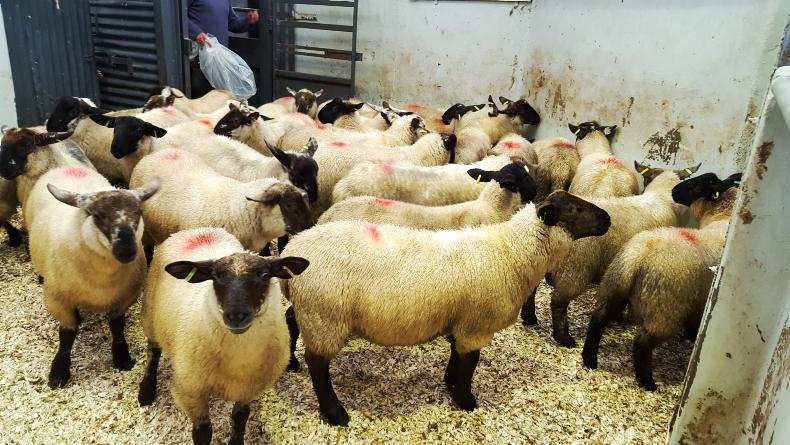Figures released by the Livestock and Meat Commission (LMC) on Friday indicate that lambs coming forward for slaughter from August to mid-September this year have less fat cover than lambs finished during the same period in 2015.
Factories have a preference for lambs in the fat class three in order to meet customer demands. However, some customers also accept lambs with a fat class of two.
The LMC report that 60% of price reported lambs slaughtered in NI plants in the six weeks prior to 17 September 2016 had a fat class of three. This is 13% less than the proportion of lambs achieving fat class three in the same period last year.
Likewise, the number of lambs grading fat class two has increased this year with 32% of lambs scored this in the six-week period in 2016 compared to 22% last year.
The LMC suggest that changeable weather conditions in recent weeks could have affected fat covers on lambs. Sources in the industry indicate that good grass growth this year has allowed more farmers to feed less concentrates to lambs which can result in longer finishing times as well as a lower proportion of lambs reaching the fat class three.
Weights
Carcase weights have also reduced in recent weeks in NI plants. However, most processors only pay for carcases up to 21kg and the reduced carcase weight from 21.3kg during this six-week period last year to 20.7kg this year means the average carcase is being fully paid for.
The vast majority of lambs are hitting the preferred U and R grades for conformation in NI plants. During the period in question this year 41% of lambs achieved a U grade and 57% were graded R. This has changed slightly from 38% grading U and 60% grading R during the same period in 2015.
Read more
Good trade for aged ewes at Blackface sale in Gortin
NI farmers get £39m subsidy boost
Figures released by the Livestock and Meat Commission (LMC) on Friday indicate that lambs coming forward for slaughter from August to mid-September this year have less fat cover than lambs finished during the same period in 2015.
Factories have a preference for lambs in the fat class three in order to meet customer demands. However, some customers also accept lambs with a fat class of two.
The LMC report that 60% of price reported lambs slaughtered in NI plants in the six weeks prior to 17 September 2016 had a fat class of three. This is 13% less than the proportion of lambs achieving fat class three in the same period last year.
Likewise, the number of lambs grading fat class two has increased this year with 32% of lambs scored this in the six-week period in 2016 compared to 22% last year.
The LMC suggest that changeable weather conditions in recent weeks could have affected fat covers on lambs. Sources in the industry indicate that good grass growth this year has allowed more farmers to feed less concentrates to lambs which can result in longer finishing times as well as a lower proportion of lambs reaching the fat class three.
Weights
Carcase weights have also reduced in recent weeks in NI plants. However, most processors only pay for carcases up to 21kg and the reduced carcase weight from 21.3kg during this six-week period last year to 20.7kg this year means the average carcase is being fully paid for.
The vast majority of lambs are hitting the preferred U and R grades for conformation in NI plants. During the period in question this year 41% of lambs achieved a U grade and 57% were graded R. This has changed slightly from 38% grading U and 60% grading R during the same period in 2015.
Read more
Good trade for aged ewes at Blackface sale in Gortin
NI farmers get £39m subsidy boost






 This is a subscriber-only article
This is a subscriber-only article











SHARING OPTIONS: